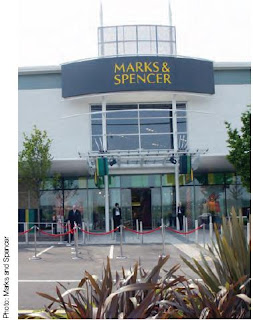Strategic group analysis and strategy Canvas for public transportation in Egypt
Inner layer of environment, strategic group analysis and the
strategy canvas can help to identify strategic gaps and opportunities. Apply
these analytical tools to an Egyptian industry of your choice.
The transportation sector in
Egypt is considered as one of the important sectors. In my analysis I shall
represent the different types of transportation an individual can use in order
to navigate the cities of Egypt, and how this type of transportation can form
different strategic groups. We will try to simulate how strategy canvas can be
represented for this sector and what are the strategic gaps and opportunities
we can find.
Starting with identifying
different types of transportation available in Egypt and how they form
different strategic groups. First let’s start with the common transportation
type that most Egyptians use which is the microbus, there are 8880 microbus in
Egypt, two million cairens use microbuses daily compared to 4.5 million who use
public buses and minibuses and two million use the underground, this means that
23% of cairens use the microbuses, although microbuses are available almost in
all Cairo, but we face today many consequences from the high volume of microbuses
in Cairo. Due to the level of education an carelessness of microbuses driver
you are badly treated inside the microbus, you are forced to pay the fare they
set without any regulations. Moreover Egypt as a whole suffers from high
accident rate caused by these microbuses, although microbuses facilitate
transportation to the Egyptians but when using it to go daily to work it will accompany
a financial load on individuals because its fare is considered moderate to most
Egyptian
Another type of transportation
which I consider it is in the same strategic group with microbuses is the
underground. The underground in Egypt was first developed at the beginning of nineteenth.
Due its high speed rather than other transportation means I believe the under
ground in Egypt is one of the strongest means of transportation in Egypt and
can strongly compete with microbuses. But the underground has two problems, the
first one it is heavily crowded which means a lot of suffering while moving
with it, the second problem it is not found all over Egypt just several places
inside Cairo. The microbuses and underground can form one strategic group due
to the following reasons:
·
Both of them offer
relatively fast and cheap means of transportation
·
Both of them serve the same
market segment
·
Both of them operate in Cairo,
but the microbuses is more wide spread than Cairo
·
Both of them serve about 2
million daily.
Another type of transportation in
Egypt is cabs, in Cairo there are thousands of cars running about that painted black
and white cars, they are not air-conditioned and their state vary considerably
from car to car, they contain no meter you have to negotiate with the driver
about the fare, the benefits, these cabs are relatively more expensive than
microbuses and underground, that’ why it serves another segment in the Egyptian
society. Customers of these cabs suffer from debating with drivers about the
suitable fare, the poor state of cars. In March 2006 Cairo introduced the
modern yellow cab that includes a meter and air-condition, these cabs follow an
organization they are not driven by individuals like ordinary cab. Actually these
cabs were introduced to solve the problems of the ordinary cabs but of course
they cost more than ordinary cabs. Cairo cab and ordinary cab can form a
strategic group because:
·
They offer private rides to
individuals.
·
Both serve in Cairo.
·
They serve the segment that
can pay for taxi expenses.
·
Although service quality is
different but it is in the same range of one group.
Another type of transportation in
Egypt is the public transportation; they include buses, minibuses and trams.
Actually these means of transportation are very cheap, very crowded and very
slow compared to other means of transportation, that’s why in Egypt many people
prefer microbuses and underground than these public transportation.
To identify strategic gaps and
opportunities for the transportation sector we will how these groups can be
illustrated in the following graphs;
From the previous illustrations
we can find that Egypt most influencing problem in transportation can be
illustrated with 3-D graph with these axes: exhaustiveness cost and speed.
The best one can show a problem
on a 2-D graph is the first one, it shows a strategic gap between the cost and
exhaustiveness of transportation.
This means that
Egyptians are
searching for a cheap and comfort means of transportation.
According to my perception if we evaluated the extent to
which offerings of different providers address the factors valued by customers,
we will rank the following:
1.
Transportation cost
2.
Exhaustiveness
3.
Speed
4.
Coverage
According to these 4 factors we can map a strategy canvas
perceived value by customers in the transportation means.
By strategy canvas model and the previous
illustrations we can find out the strategic gaps and the opportunities suitable
to apply for the transportation sector in Egypt.





Comments
Post a Comment